The month of March gave south Florida its coldest temperatures of the year, dipping into the high thirties (~3 degrees Celcius) with one of our several cold (or should I say "cool?") fronts. Rain threatened with their approach but precipitation was sparse...
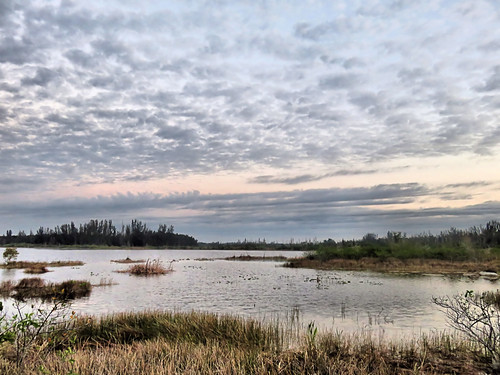
...and clear skies followed for several days after the passage of each front:
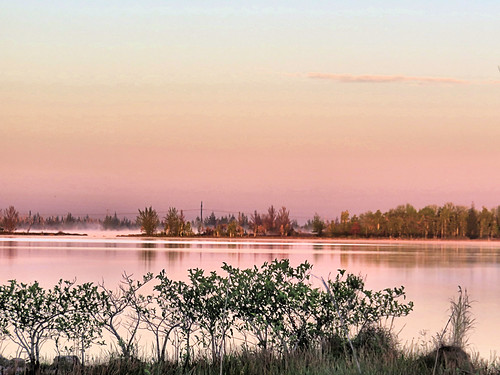
As a teenager working towards a Boy Scout merit badge I started keeping daily logs of bird sightings. I still have my old records, and I enjoy re-living some of the sightings.
The habit of carrying a pencil and a pocket-sized spiral notebook did not persist for very long, and even the notes I made about first or unusual bird sightings became more and more sketchy, finally deteriorating to date, name of bird and place-- the latter sometimes ambiguous.
I assumed I would always remember the exact location of "Charlie's Woods," "up at Camp" and "down the river," but now they do not exist. These are the entries for my first ten weeks of birding (Don't the rubber-stamped dates lend an air of authenticity?):

Stopping to take notes interfered with the joy of birding, and diverted my attention away from the sky and surroundings, possibly depriving me of exciting sightings.
Fast forward to the electronic revolution and the age of eBird. After moving to Florida I readily adapted to using this Cornell University Laboratory of Ornithology iPhone application to report my sightings. Yet there remained a certain nuisance factor, as I still had to stop and occupy both hands to punch in and update sightings.
After all, with snakes and fire ants to contend with, I was already looking down half the time just to walk from place to place. Then I found out that I could use the iPhone speech recognition feature. The eBird filter should be set to species expected locally. This will limit the matches to a single species or a select few.
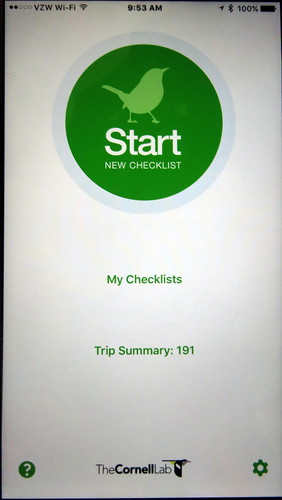
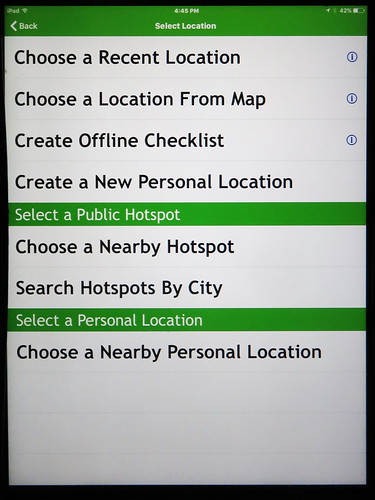

Talking to the eBird app requires one to adopt a spartan language style. Use as few syllables as necessary. Speak distinctly, sounding every consonant. If you don't, your "Osprey" becomes "odd spray." Better to say "OHspray."
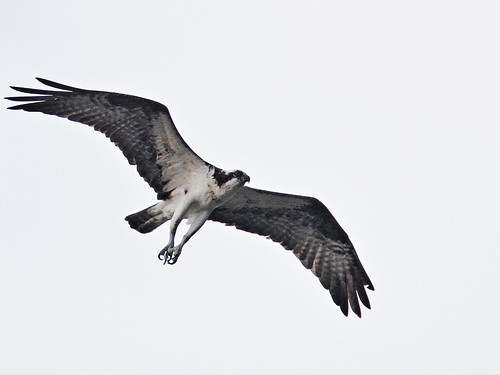
Say "Mottled Duck" too fast and it comes out "Matilda," or fail to pronounce the "TT" results in "modeled," neither of which matches a species in the eBird database. Ths Mottled Duck is in the company of a Black-necked Stilt (for which "black, hyphen, neck" will suffice for eBird):

A White Ibis must be called a "hWyte ibis" lest it become "what I best."
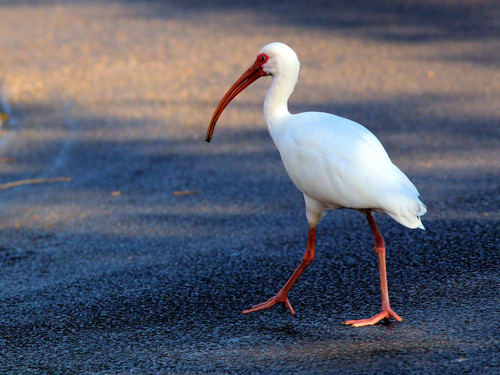
Never use plurals, as they will be translated to possessives such as dove's and sparrow's. Goose matches many species while geese does not. Keep it short and simple. "Egyptian" is all you need to say to call up the Egyptian Goose:
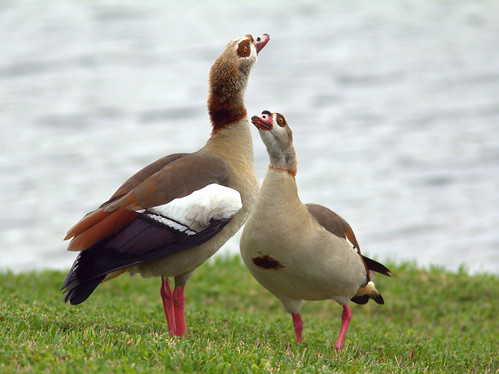
"European" is enough to auto-complete the Starling...
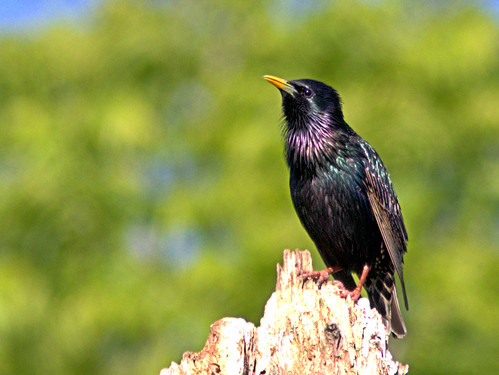
...and "Loggerhead" matches the only bird in our local list. The local filter produces the Shrike but ignores the rare Loggerhead Kingbird (and Turtle):

There is no such bird as a bluejay, so say "Blue, Jay:"

Make sure the syllables are run together where appropriate, so that your "kingfisher" does not summon an unrecognized "King Fisher." Only the Belted Kingfisher is selected in south Florida, while you may need to choose from a list of kingfishers in south Texas or Latin America:
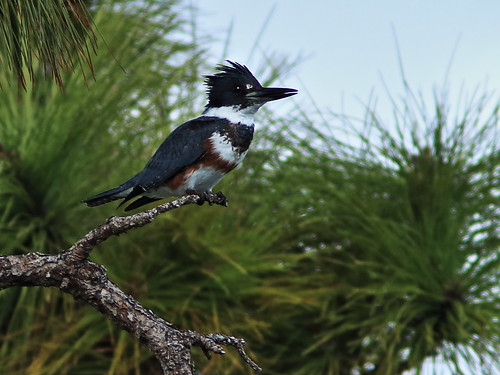
Say "hyphen" when there is one in a bird's name -- it's a "red, hyphen, bell" if you want to report a Red-bellied Woodpecker in Florida (the filter in the western US would turn up a sapsucker!):
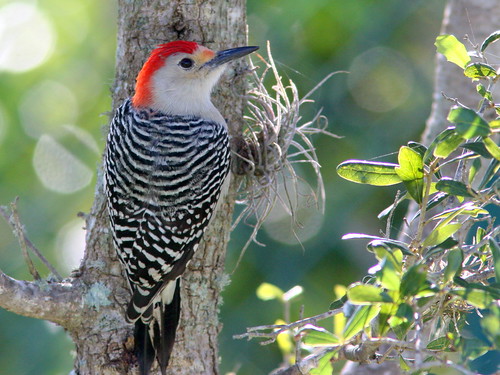
Truncating the names actually improves accuracy. For example, "boat, hyphen, tail" is enough for Boat-tailed Grackle:
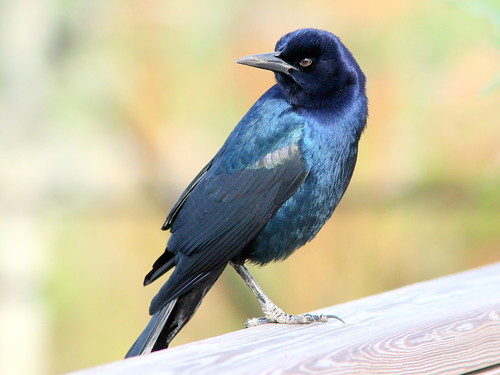
"Tricolored" will match the Heron by that first name, if you do not improperly add a hyphen:

Don't worry if "Mourning Dove" comes out "Morning Dove," as eBird will automatically spell-check it and enter it properly:
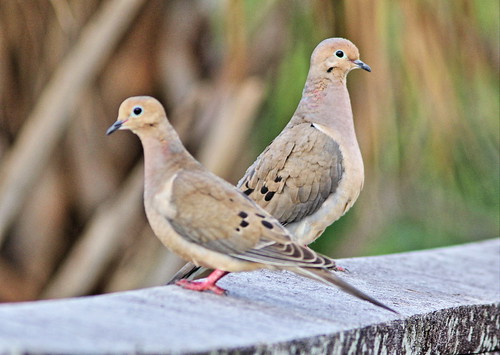
The eBird app's artificial intelligence (AI) also automatically drops the "e" in "Downey" Woodpecker:
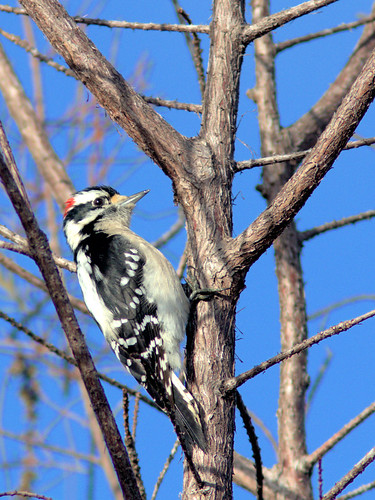
However, eBird seems to ignore a British flair, and refuses to match your Gray Catbird, which Apple's AI insists on spelling as "grey," so simply say "catbird," (but not "cat, bird") to enter it correctly:
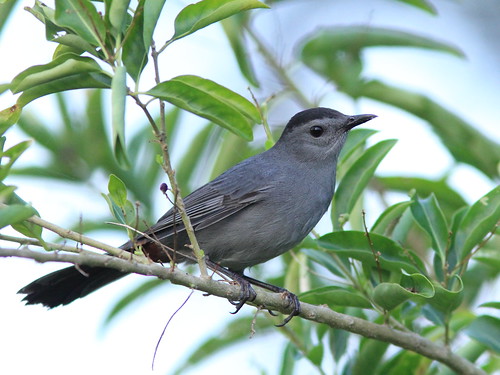
Similarly, to keep the Blue-gray Gnatcatcher from defaulting to unacceptable "grey," simply say "blue, hyphen, letter G."

The correct species will pop up if you leave off "Heron" and just say "Great, Blue"...
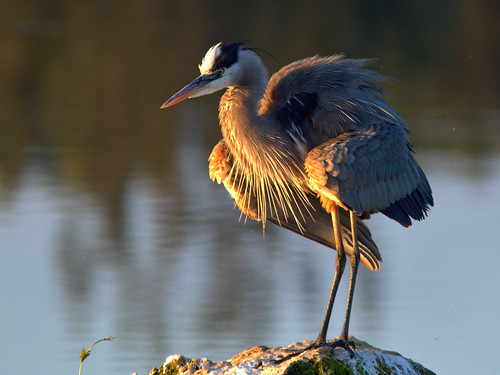
...or "Little, Blue:"
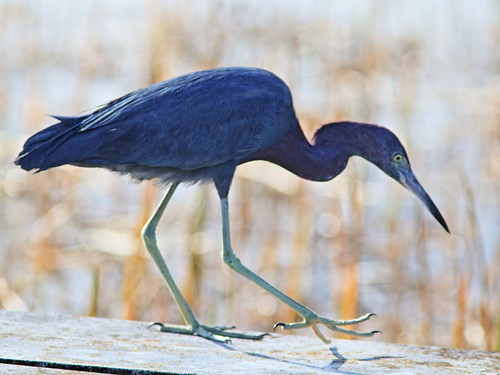
"Red hyphen shoulder" is enough for the Red-shouldered Hawk:

I could go on and on, but if you haven't used speech recognition with the eBird app, try it and you may like it! This feature also simplifies addition of species comments and other observations about weather and habitat.
Oh, and some bird names, notably "vireo" for me, will never be properly recognized, although "white hyphen letter E" will match with the White-eyed Vireo...

...and "red hyphen letter R" brings up the Red-eyed Vireo:

If all else fails, go back to punching in the full name or its four-letter banding code, but watch where you step!
= = = = = = = = = = = = = = =
Linking to Misty's CAMERA CRITTERS,
Linking to Eileen's SATURDAY'S CRITTERS,
Linking to SKYWATCH FRIDAY by Yogi, Sylvia and Sandy
Linking to WEEKEND REFLECTIONS by James
Linking to BirdD'Pot by Anni
Linking to Our World Tuesday by Lady Fi
Linking to Wild Bird Wednesday by Stewart
Linking to Wordless Wednesday (on Tuesday) by NC Sue
Linking to ALL SEASONS by Jesh
________________________________________________
Please visit the links to all these memes to see some excellent photos on display
________________________________________________
When I took this photo of a Great Blue Heron and its reflection, I did not know that a deer was watching from the seclusion of the wooded grove on the other side of the water:
 Sunrise from our back patio:
Sunrise from our back patio:
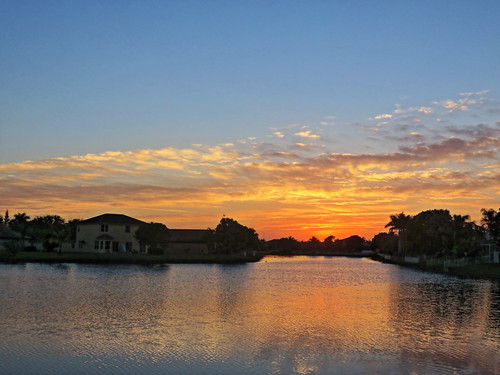 Early one morning, I almost stepped on these three newly hatched Killdeer chicks, huddled at the edge of the gravel track. I had unknowingly walked by their nest many times previously:
Early one morning, I almost stepped on these three newly hatched Killdeer chicks, huddled at the edge of the gravel track. I had unknowingly walked by their nest many times previously:
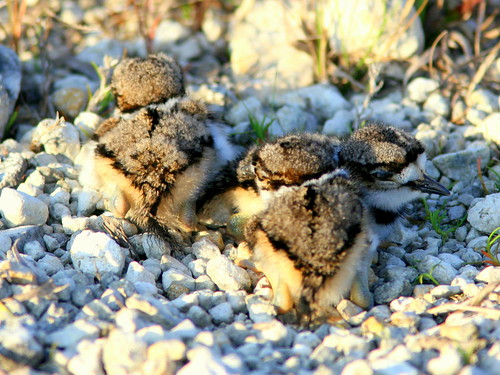
Killdeer eggs are also very hard to find. This courageous female stood defiantly in my way. At first I did not see the four eggs in the nest she was protecting, just to the right in this photo:
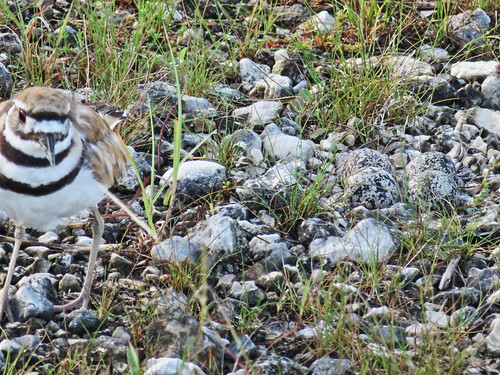
Another incubating Killdeer is nearly invisible:

It's hard to believe that a male Painted Bunting might be included among the "Cryptic Critters" I have encountered:
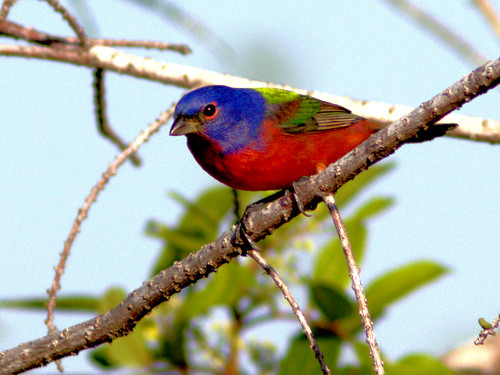 Yet, here he is in a Brazilian Pepper, almost overlooked against the green leaves, red berries and blue sky:
Yet, here he is in a Brazilian Pepper, almost overlooked against the green leaves, red berries and blue sky:
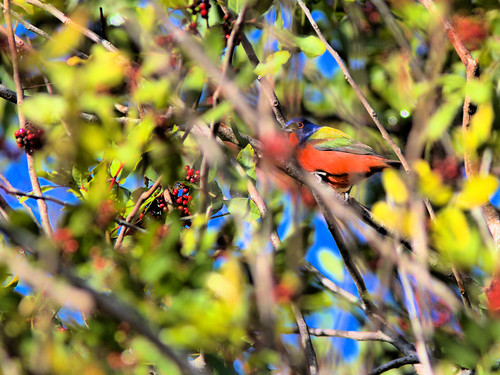 The bright green female Painted Bunting can sometimes be very hard to find among the leaves:
The bright green female Painted Bunting can sometimes be very hard to find among the leaves:
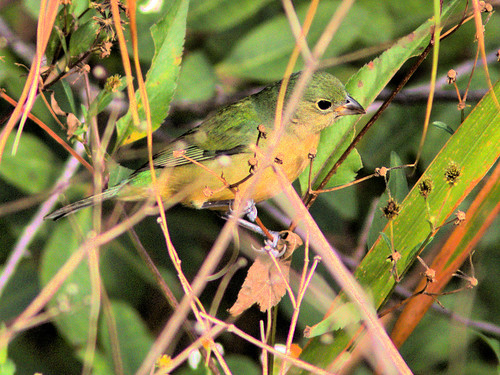 A Wilson's Snipe is very easy to overlook amid the grass and sedges. It is in the center of this photo at the edge of the water (click to enlarge):
A Wilson's Snipe is very easy to overlook amid the grass and sedges. It is in the center of this photo at the edge of the water (click to enlarge):

See it better in this crop of the above photo:
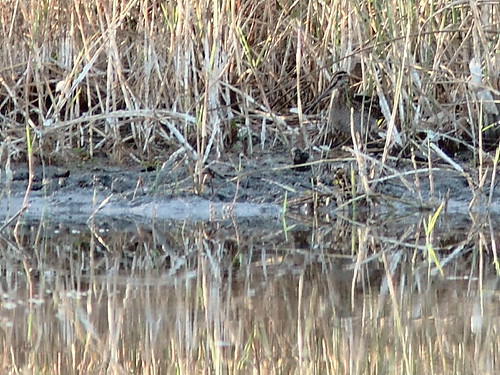
It is nice when one comes out into the open:

I almost did not see this Limpkin, standing right behind a White Ibis:

This is a clearer view of a Limpkin hunting for Apple Snails:
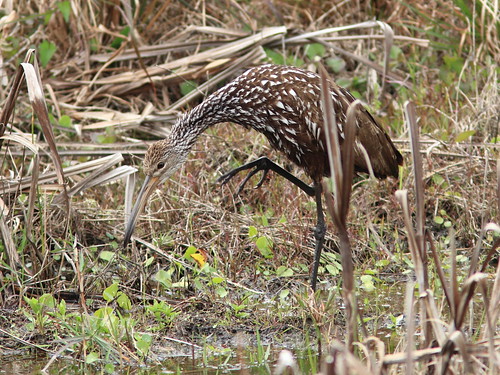
This American Bittern is watching me intently:
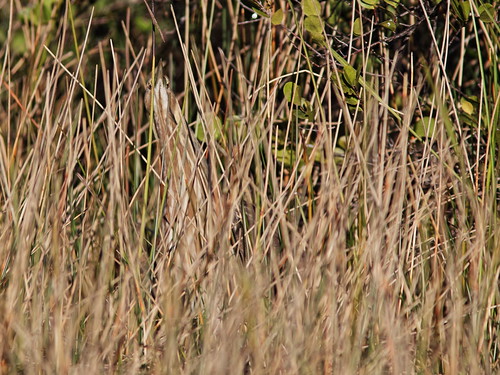
A study of stealth in slow motion, the bittern can disappear right before one's eyes:
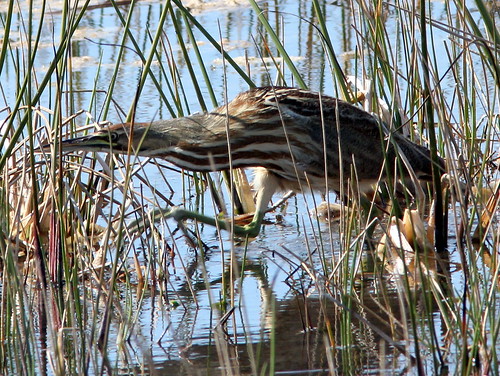

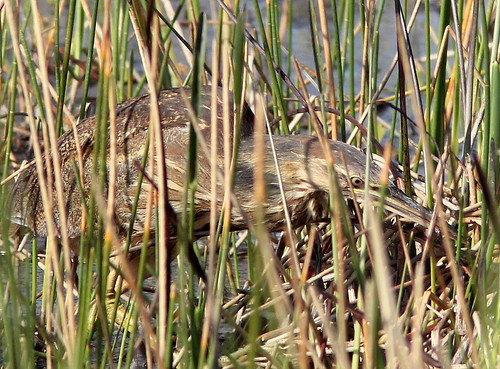
So, the lesson in all of this is to tread lightly and watch where you step. Fire ant nests are often not this easy to find:
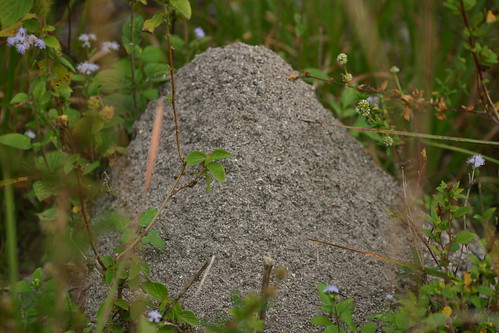
WARNING TO OPHIDIOPHOBIAS (I know who you are)-- DO NOT LOOK AT THE NEXT PHOTOS!
When birding in marshy areas I spend almost as much time looking down at my next footfall as looking up. I followed a little muddy deer trail and nearly stepped on something even more dangerous. I did not see it as I was taking photos of scenery and distant falcons. Then, as I turned to walk back to the main path, I saw something next to my foot which looked like a small yellow insect fluttering its wings-- an odd dragonfly or moth? No, as I bent down for a closer look I saw it was the vibrating yellow tail of a juvenile venomous Cottonmouth water moccasin .
It was in a defensive posture. When I moved, it opened its jaws wide and straight up. However the lining of its mouth was not white as is the case of adult Cottonmouths.
It was so well camouflaged that I could not see it in the viewfinder. The muddy foot path is on the left in this photo and I took several shots just to be sure one of them included the snake. It is on the right side of the path just beneath the very center of this picture (click to enlarge).
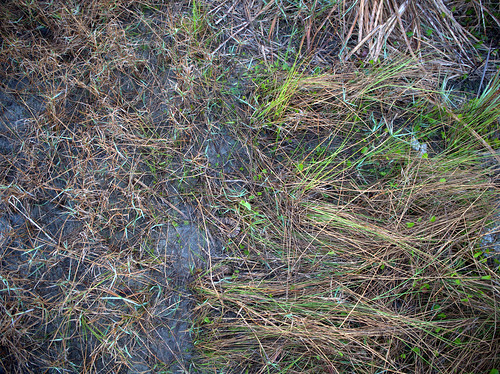
Its yellow tail is near the upper left corner of this photo:
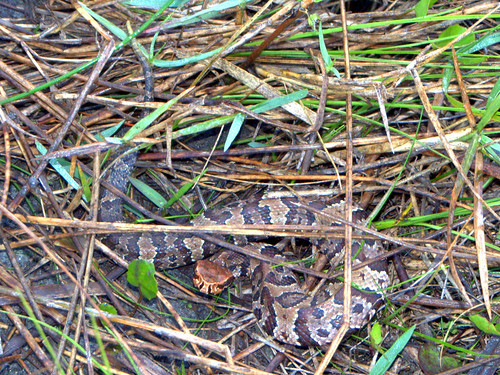
It is only about 10-12 inches long. Here its mouth is partly open:
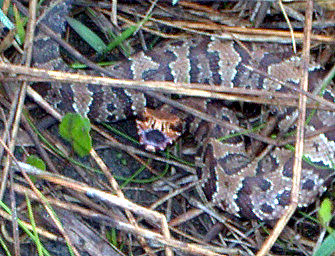
Baby Cottonmouths are born alive. Unlike adults, they are colorfully banded and "...juveniles have bright-yellow tail tips that they use as a caudal lure to attract prey. They undulate the tail tip slowly back and forth to lure prey, such as frogs, within striking distance." Ref: LiveScience.com
Here is a better photo of a "Yellow-tail" which I took back in 2011. It was sitting out in the open in the middle of a muddy path:
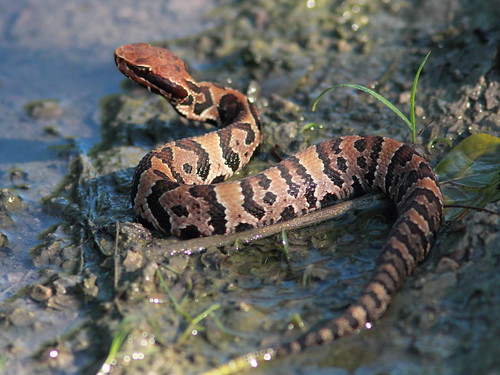
= = = = = = = = = = = = = = =
Linking to Misty's CAMERA CRITTERS,
Linking to Eileen's SATURDAY'S CRITTERS,
Linking to SKYWATCH FRIDAY by Yogi, Sylvia and Sandy
Linking to WEEKEND REFLECTIONS by James
Linking to BirdD'Pot by Anni
Linking to Our World Tuesday by Lady Fi
Linking to Wild Bird Wednesday by Stewart
Linking to Wordless Wednesday (on Tuesday) by NC Sue
Linking to ALL SEASONS by Jesh
________________________________________________
Please visit the links to all these memes to see some excellent photos on display
________________________________________________
Before sunrise on March 9, clouds hung low over the lake:
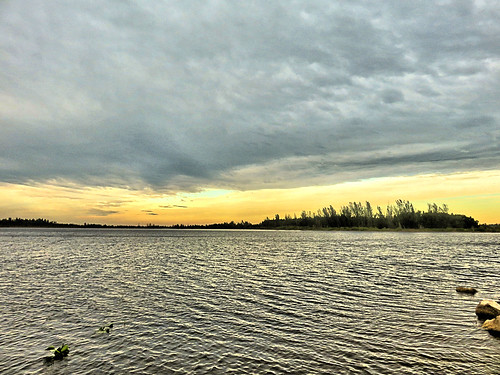
The rising Sun briefly broke through the cloud cover to illuminate the Pine Bank on the far end of the Wet Prarie, but rain never materialized:
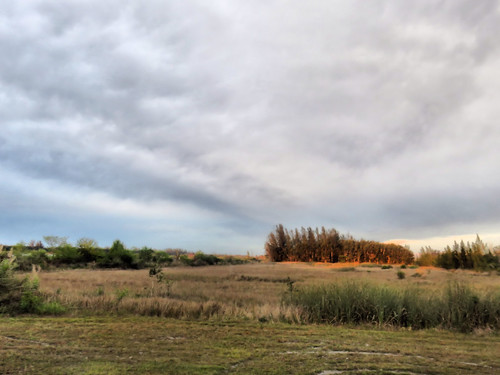
During times of high water, the lake spills over into the Wet Prairie. Normally the water begins to recede after the end of summer. Lake levels have been unusually high for the past three years.
The entire prairie was still inundated in December, 2016

In October of 2017 the lake remained fairly high, but the water was confined to a slough created by an ATV trail.
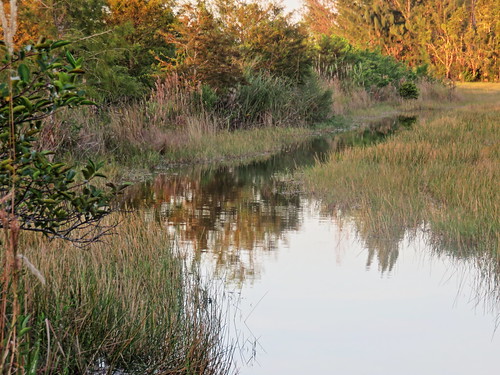
On March 6th the lakeside marshes had nearly dried up, trapping many fishes which did not escape before being blocked off from the lake. The concentration of prey attracted herons, opossums, Bobcats, raccoons and even venomous Cottonmouth Water Moccasins, which subsist largely on carrion:
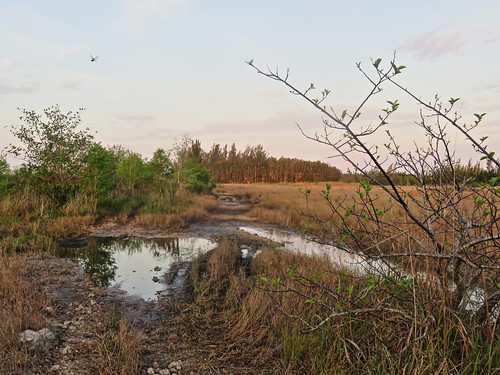
It was only a few minutes after sunrise, and the sun had not yet touched a little residual pool in the Wet Prairie. It was teeming with tiny life forms as evidenced by the ripples they created on the surface of the water.
I assumed that the larger fish had long ago escaped back into the lake or met their fate with predators and scavengers. Behind, they left their eggs and offspring to await an inevitable fate. It will probably be entirely dry within a week.
As I scanned the prairie, an immature Little Blue Heron flew in and settled atop a small Pond Cypress tree:

The heron's plumage might look as if soiled, but it is transitioning from its white immature plumage to the dark blue of an adult:

The "Little Blue" flew down to the pool, now appearing as liquid gold, reflecting the winter foliage in warm light. The heron immediately spotted its prey:

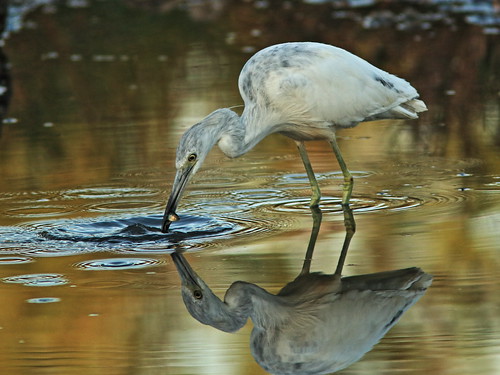
I recognized its catch as the tiny fry of the introduced Mayan Cichlid, one of the most common fish species in south Florida canals and lakes:

This fish is noted as a protective parent, defending its eggs and fry for several weeks, until their offspring grow to about 2 cm (3/4 inch). These babies appear to be a bit larger and were probably abandoned when the adults either escaped to open water or perished in the isolated pools or were taken by predators.
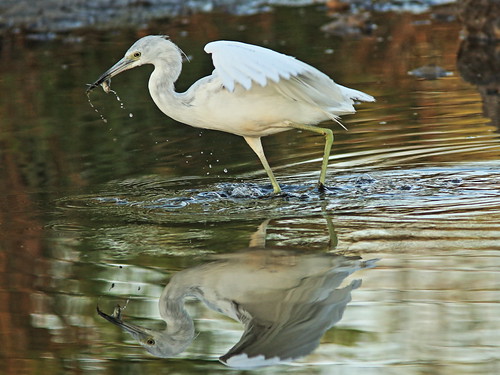
Native to Mexico and Central America, Mayan Cichlids are a good food source and most likely escaped from south Florida fish farms about 30-40 years ago.They can survive low oxygen levels but succumb if temperatures drop to near freezing.
A Tricolored Heron suddenly flew in to join in the feast:
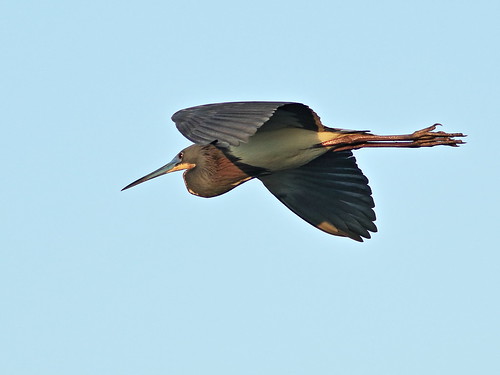
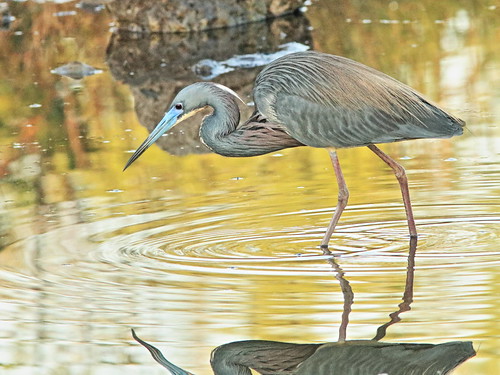
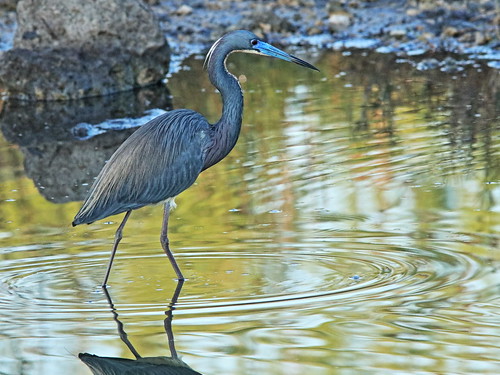

The two species fed together amicably:
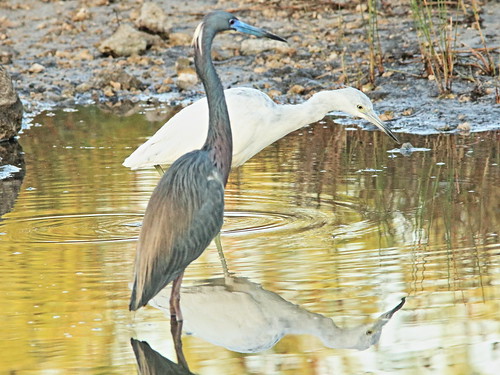 = = = = = = = = = = = = = = =
= = = = = = = = = = = = = = =
Linking to Misty's CAMERA CRITTERS,
Linking to Eileen's SATURDAY'S CRITTERS,
Linking to SKYWATCH FRIDAY by Yogi, Sylvia and Sandy
Linking to WEEKEND REFLECTIONS by James
Linking to BirdD'Pot by Anni
Linking to Our World Tuesday by Lady Fi
Linking to Wild Bird Wednesday by Stewart
Linking to Wordless Wednesday (on Tuesday) by NC Sue
Linking to ALL SEASONS by Jesh
________________________________________________
Please visit the links to all these memes to see some excellent photos on display
________________________________________________































































